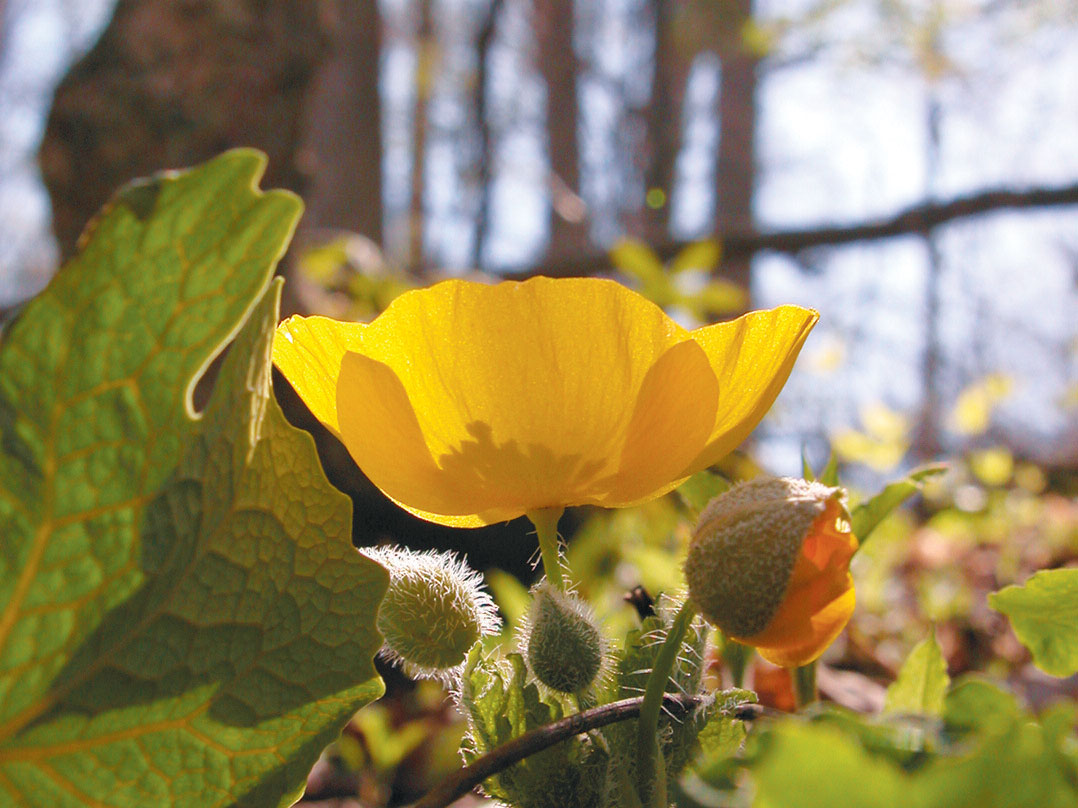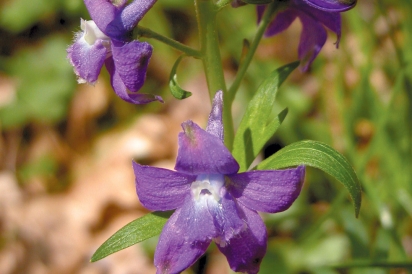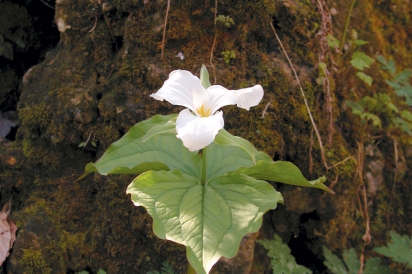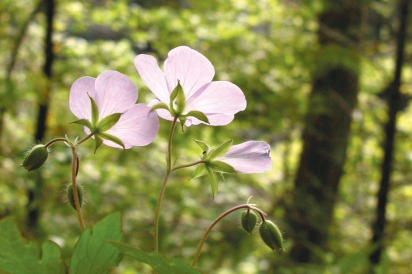Where the Wildflowers Are
The Arc of Appalachia’s spring Wildflower Pilgrimage
“The first wildflower of the year is like land after sea.”
—Thomas Wentworth Higginson
Ohio wildflowers—beautiful gifts, fleeting and delicate—are spring’s promise of the renewal of life and a reminder of the splendor of the growing season to come. Each spring, the Arc of Appalachia Preserve System offers a three-day Wildflower Pilgrimage focused on this natural phenomenon. This year the Wildflower Pilgrimage will celebrate its 10th anniversary at the largest nature preserve in the Arc of Appalachia’s preserve system and the headquarters for the organization, the Highlands Nature Sanctuary, located in Bainbridge, Ohio, with wildflower hikes led by some of Ohio’s finest naturalists and botanists.
“This event really celebrates the incredible birth of spring wildflowers in our biome. There is nothing like this in the world,” Nancy Stranahan, director of the Arc of Appalachia, notes. “There are other wildflower pilgrimages out there, some of which are better known, such as the Smoky Mountain pilgrimage. Ours is a favorite among nature lovers because our abundant limestone bedrock offers particularly exceptional flowers. It’s a bit of a hidden secret, actually. If more people understood the diversity and beauty of the wildflowers that arrive each spring in this region I believe there would be a global draw to see this amazing phenomenon.”
The Arc of Appalachia, a nonprofit organization founded in 1995, focuses on the preservation of natural spaces in southern Ohio by acquiring land in the region as sanctuaries for public use. Over its 20-year history, the Arc of Appalachia has established 14 nature preserves that the organization owns and operates, as well as two nature preserves that are operated on behalf of the Ohio History Connection. Most of these preserves lie near the edge of the Appalachian foothills along the tributaries of the lower Scioto River.
Ohio is home to several hundred varieties of wildflowers that bloom each spring and summer with exquisite beauty.
The greatest forest cover in Ohio is located directly south and east of Columbus in woodlands that belong to the Great Eastern Forest, which covers a third of the United States. This vast forest is one of the world’s most biodiverse temperate forests, home to an amazing bounty of wildflowers.
The work of the Arc of Appalachia to preserve this treasure is ever important due to the state’s history of extensive forest timber harvesting. Though Ohio has made significant gains in reclaiming forestland in the region since the 1940s, with nearly eight million acres or 30% of the state covered in forest today, when settlers arrived more than 200 years ago, it is estimated that nearly 95% of the state was covered by the incredibly diverse Eastern Forest. Spring wildflowers in these original mature forests were much more common than they are today.
Nancy notes, “Although much of the Eastern U.S. is still covered with trees, the vast majority of eastern woodlands may have considerably less than half of their original species diversity. Ancient and fully intact temperate hardwood forests are extremely rare today, occupying less than half of 1% of their original range in the Eastern Forest heartland.”
In addition to having the chance to enjoy breathtaking wildflowers, enjoy exquisite spring hikes, and learn about and nurture our region’s important forestland, Wildflower Pilgrimage participants are also offered the opportunity to experience outstanding, home-cooked food throughout the weekend.
Prior to co-founding the Arc of Appalachia, Nancy owned and operated Benevolence Café, a vegetarian restaurant that was located on Swan Street next to the North Market in Columbus, as well as Benevolence Bakery, which was located inside the North Market. The Café and Bakery, which were well-known for their healthy, country comfort foods, were favorites among the Columbus food community. Many of the meals served during the Wildflower Pilgrimage weekend use recipes from the establishments, including homemade breads, such as raspberry white chocolate scones, herbed vinaigrettes, made-from-scratch vegetarian chilies, and homemade chicken salad and egg salad sandwiches
To attend the Pilgrimage on April 17–19 the cost per participant is $125 for the full weekend package, which includes guided hikes, all programming, meals, a wildflower guide booklet, and trail maps. Overnight accommodation is not included in the registration cost. The Highlands Nature Sanctuary will offer a limited number of lodging options onsite, additionally there are a number of hotels, inns, and cabins in the region where Pilgrimage participants can book a stay.
To learn more and to register to attend the 2015 Wildflower Pilgrimage, visit arcofappalachia.org.
Some of the wildflowers that may be seen on the Pilgrimage include:
Celandine Poppy (Stylophorum diphyllum) A flower with four yellow petals, this native poppy variety likes rich and moist growing conditions, such as wooded floodplains and damp cliffs.
Dwarf Larkspur (Delphinium tricorne) A blue or purple flower that features five sepals, this wildflower is poisonous as a result of the presence of alkaloids.
Large-Flowered Trillium (Trillium grandiflorum) As Ohio’s official state wildflower and the standard-bearer of spring, this flower is found in all of Ohio’s 88 counties. The seeds of the flower are dispersed by ants through a process called myrmecochory.
Shooting Star (Dodecatheon meadia) A member of the primrose family, this flower is also informally called the “Pride of Ohio” because of its remarkable beauty. The white, pink, or lavender petals form a star shape. Historically, the wildflower was plentiful in the region, however, as a result of habitat destruction the variety is now less populous.
Virginia Bluebells (Mertensia virginica) This flower is known as one of the most beautiful varieties of spring ephemeral wildflower in the Eastern Forest. Thomas Jefferson cultivated the flower in the gardens of Monticello.
Wild Geranium (Geranium maculatum) A distant relative of the household geranium, this flower is also known as “Crane’s Bill” because of the flower’s fruit, which resembles a bird beak.










